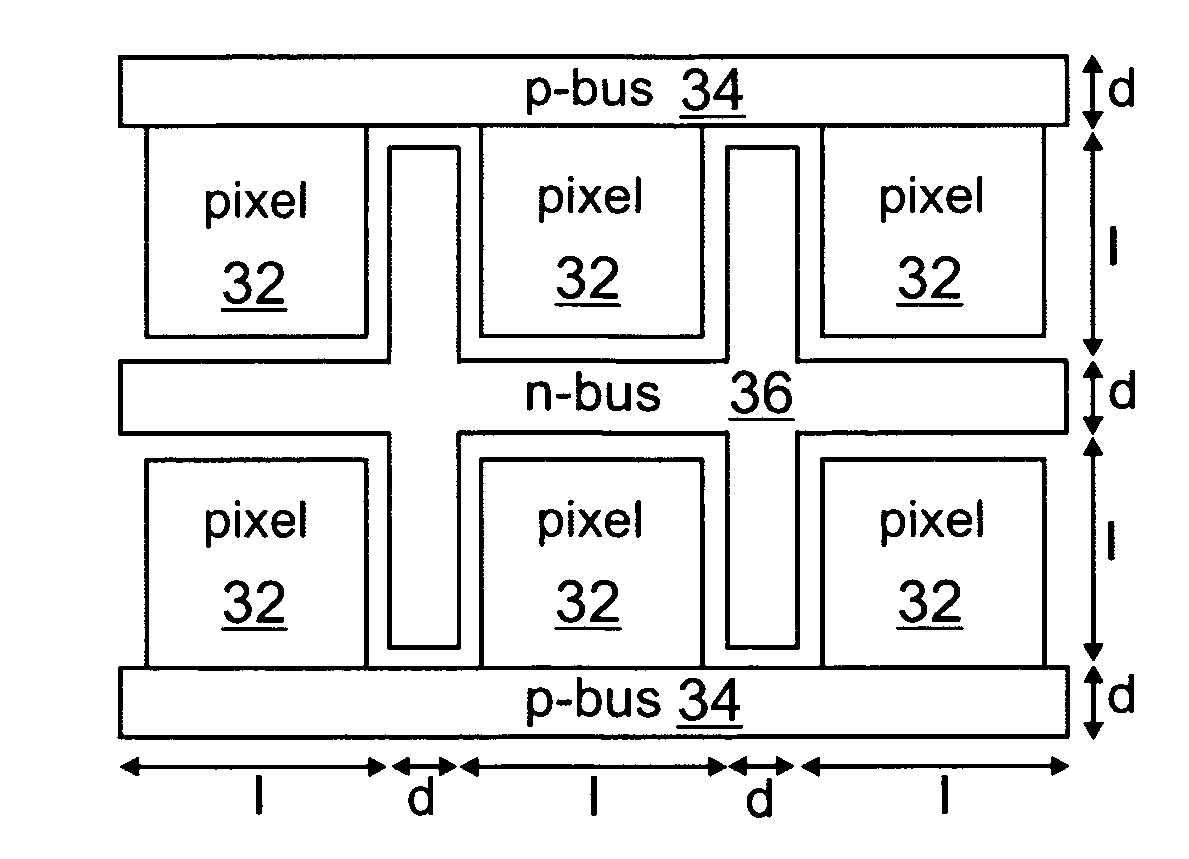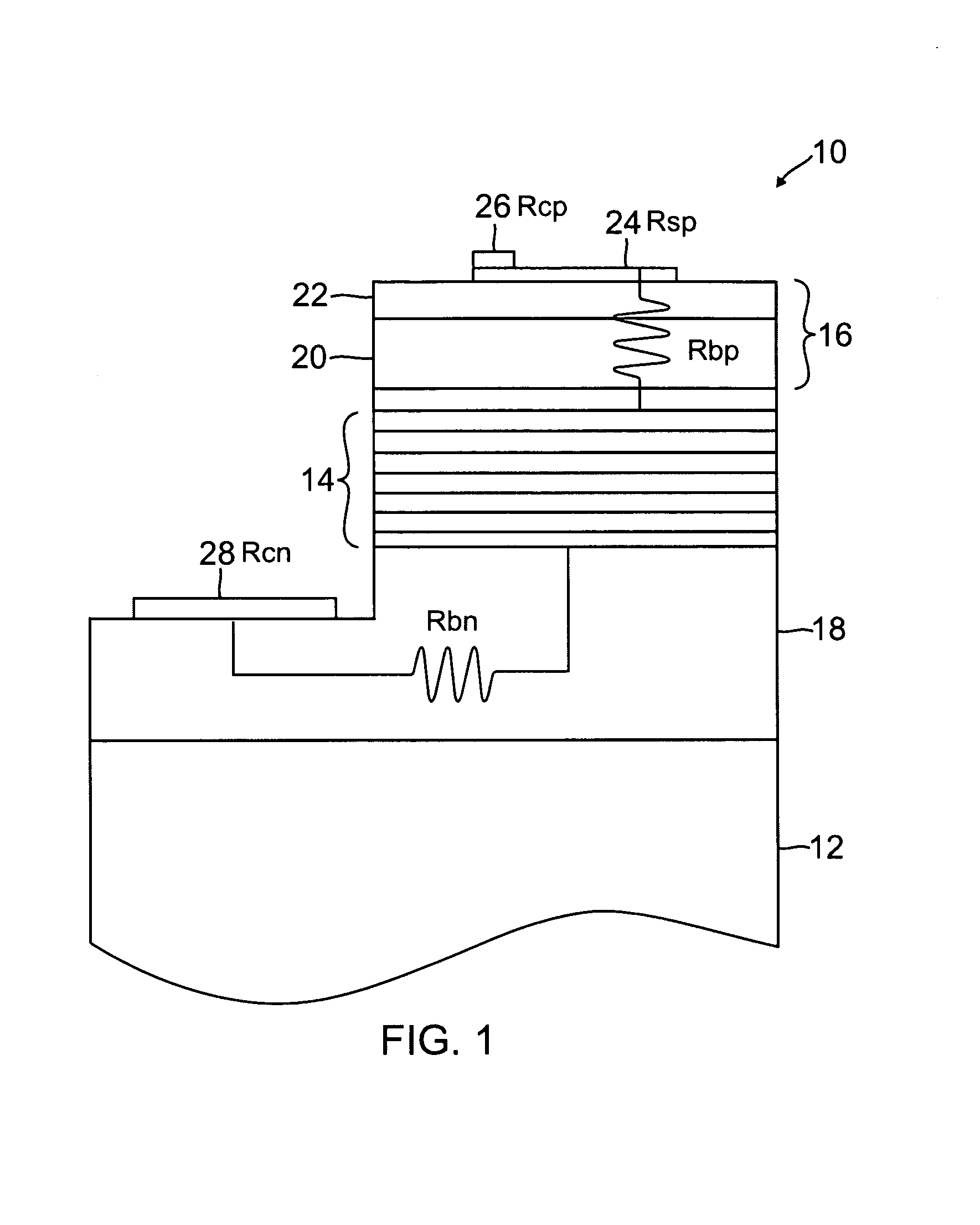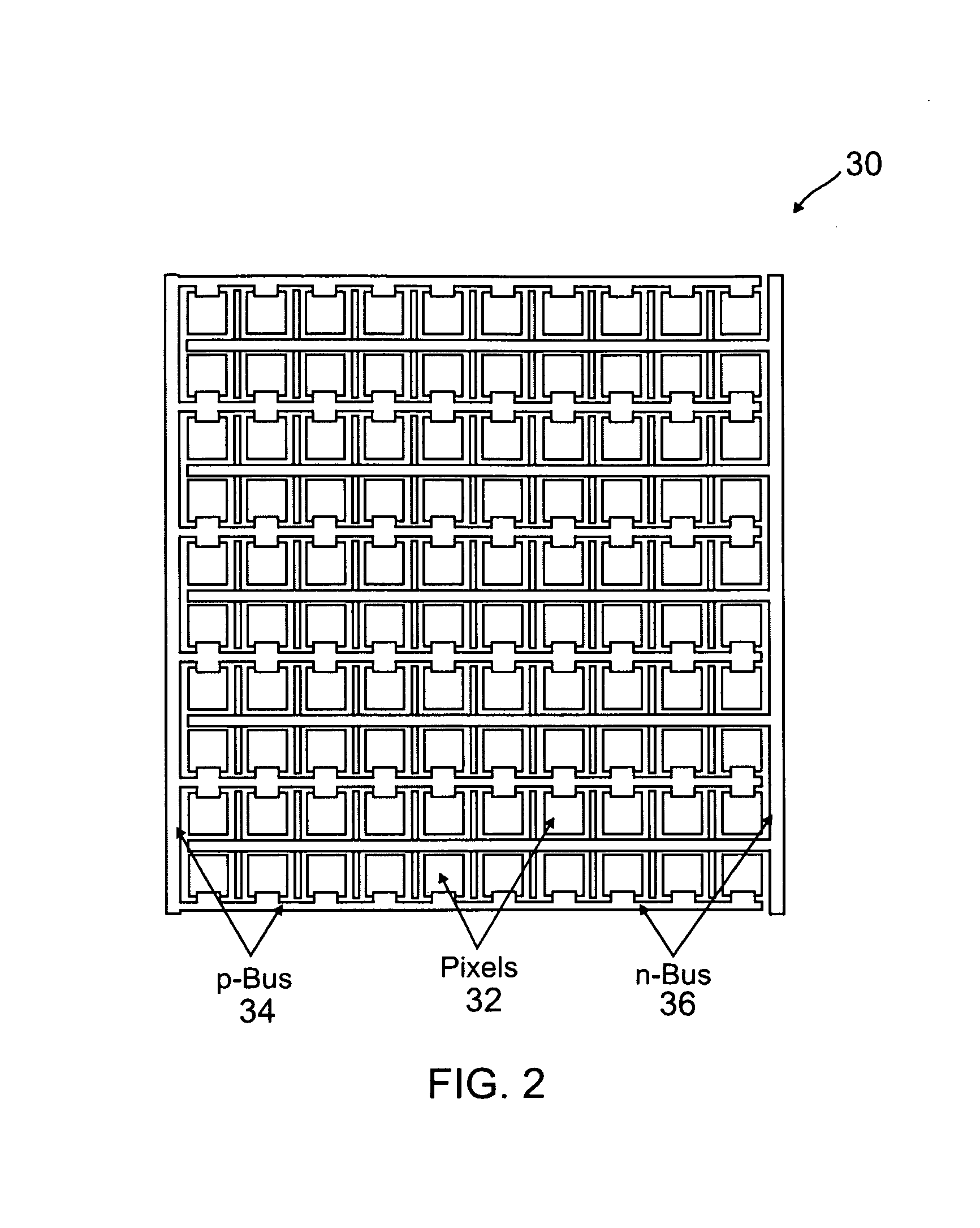Interdigitated multi-pixel arrays for the fabrication of light-emitting devices with very low series-resistances and improved heat-sinking
a light-emitting device and multi-pixel array technology, which is applied in the manufacture of electric discharge tubes/lamps, lighting and heating apparatuses, and discharge tubes luminescnet screens. it can solve the problems of limited light-emitting wavelength (i.e., its color), high current operation, and high output power of high-brightness light-emitting devices. achieve the effect of minimizing series resistance, improving heat-sinking, and minimizing series resistan
- Summary
- Abstract
- Description
- Claims
- Application Information
AI Technical Summary
Benefits of technology
Problems solved by technology
Method used
Image
Examples
Embodiment Construction
[0037]In the following description of the preferred embodiment, reference is made to the accompanying drawings which form a part hereof, and in which is shown by way of illustration a specific embodiment in which the invention may be practiced. It is to be understood that other embodiments may be utilized and structural changes may be made without departing from the scope of the present invention.
(I) Analysis for Series Resistance
[0038]FIG. 1 illustrates a light-emitting device 10 that comprises a diode structure (i.e., a p-n junction) fabricated on a substrate or template 12 with active layers or region (such as quantum wells (QWs)) 14 embedded between p-layers or regions 16 and n-layers or regions 18. The p-layers 16 include both a p− layer 20 and p+ layer 22. The device 10 also includes a semi-transparent p-current-spreading layer (i.e., p-contact) 24, thick p-contact 26 and n-contact 28.
[0039]For a square-shaped light-emitting device grown on an insulating substrate, such as sho...
PUM
 Login to View More
Login to View More Abstract
Description
Claims
Application Information
 Login to View More
Login to View More - R&D
- Intellectual Property
- Life Sciences
- Materials
- Tech Scout
- Unparalleled Data Quality
- Higher Quality Content
- 60% Fewer Hallucinations
Browse by: Latest US Patents, China's latest patents, Technical Efficacy Thesaurus, Application Domain, Technology Topic, Popular Technical Reports.
© 2025 PatSnap. All rights reserved.Legal|Privacy policy|Modern Slavery Act Transparency Statement|Sitemap|About US| Contact US: help@patsnap.com



